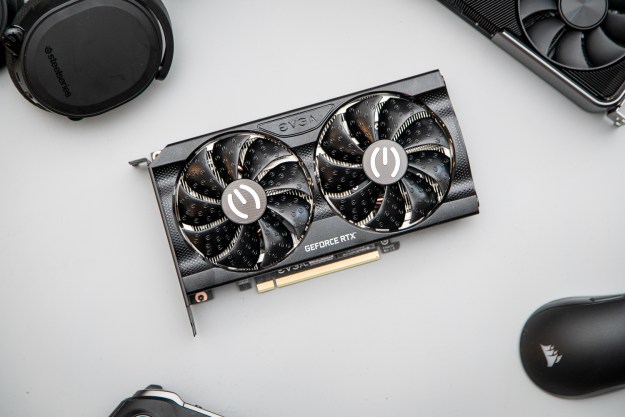AMD debuted its first Vega graphics cards since 2017 but they aren’t designed with gamers in mind, despite their impressive specifications. These new 7nm graphics cards are the first that AMD has produced, ahead of the planned 7nm Navi consumer graphics cards expected to debut in early 2019. If AMD can stick to its plan to ship out at least one of the new Vega enterprise cards this side of the new year, it will be the first 7nm graphics chips outside of mobile to be launched in the computing industry.
Graphics chips, like CPUs, go through regular die shrinks — fitting more transistors into a smaller package. It leads to improvements in performance and power efficiency and is something that tends to happen every couple of years. AMD’s first-generation Ryzen CPUs were built on a 14nm process, while the second generation was built on 12nm hardware. The original Vega graphics cards were built on a 14nm FinFet process, while Nvidia’s new RTX graphics cards are based on a 12nm process. The new Vega Instinct cards drop down to an impressive 7nm.
Unlike those other cards, AMD’s new Vega graphics cards are designed with enterprise uses in mind. They are said to be optimized for deep leaning and high-performance computing scenarios and should see use in the scientific, automotive, and artificial intelligence fields.
There are two cards, the Radeon Instinct M150 and M160. Both are built on the Vega 20 architecture (not to be confused with Radeon Pro Vega 20) which is built on the TSMC 7nm FinFet process and have 16GB and 32GB of second-generation high bandwidth memory (HBM2), respectively. The new cards offer between 10 and 20 percent improvements in performance over their predecessor, the Instinct M125, by some metrics. However, the M160 offers double the memory bandwidth and as much as 10 times the performance in peak double precision performance.
Crucially though, these GPUs are designed to scale well together using AMD’s Infinity Fabric. AMD claims that up to eight of these new GPUs can be connected in a single server.
None of this matters much for gamers, as these cards are not designed to render the latest games, but to crunch far less exciting numbers. However, if AMD can ship these cards out as intended — before the end of 2018 for the M160 and early 2019 for the M150, per Engadget — then it suggests that 7nm GPU production is strong enough that consumer cards from the hotly anticipated Navi generation may not be far behind.
Editors' Recommendations
- 5 cheap graphics cards you should buy instead of the RTX 4060
- AMD’s graphics card sales just took a nosedive
- Intel Battlemage graphics cards: release date speculation, price, specs, and more
- The sad reality of AMD’s next-gen GPUs comes into view
- AMD needs to fix this one problem with its next-gen GPUs




